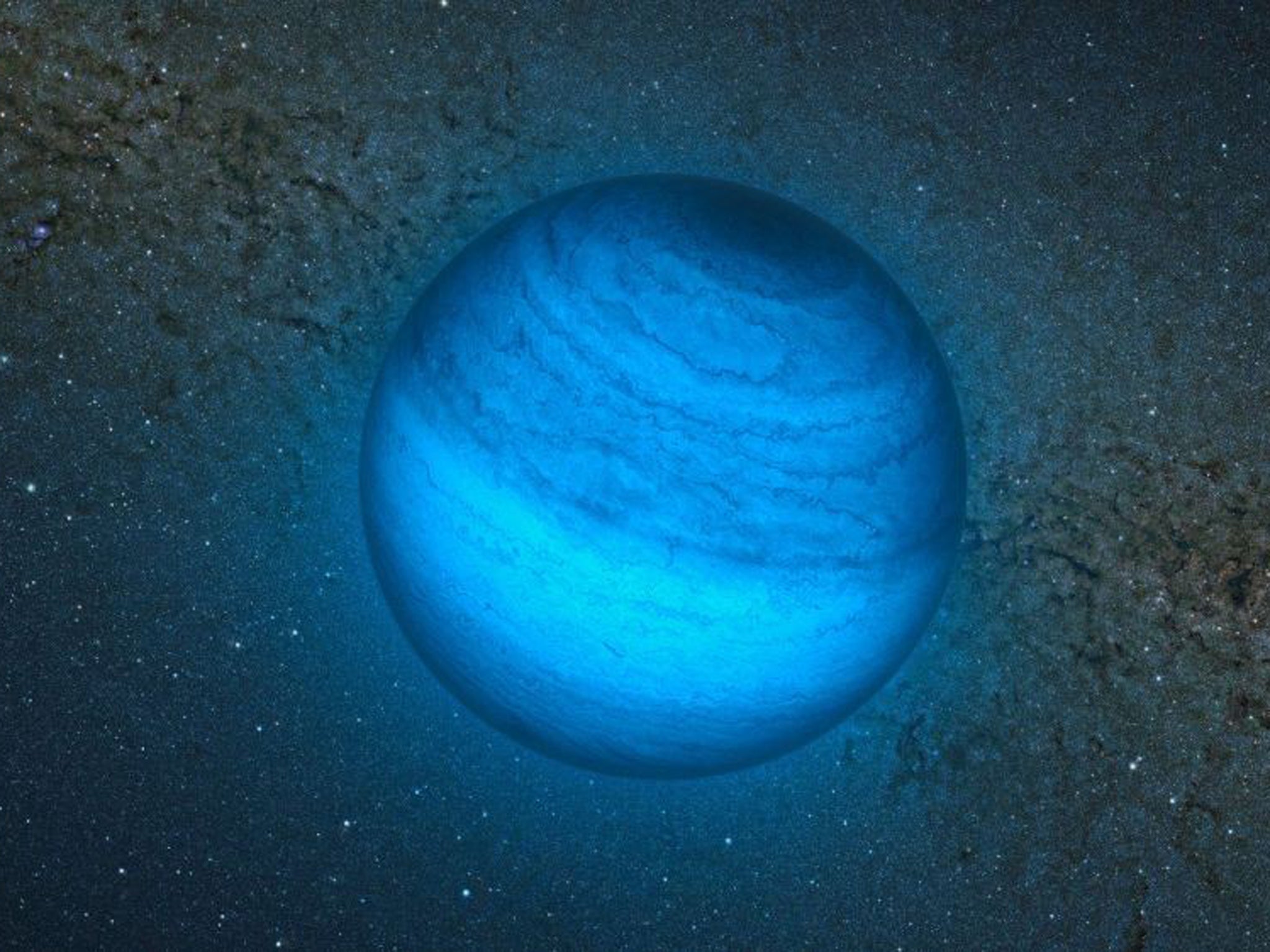The Mary Celeste of space: Scientists discover first ever free-floating planet not trapped by gravity of a star

A planet without a sun that wanders through space like a lost Mary Celeste has been discovered by astronomers who say it is the first confirmation of a free-floating planet that does not orbit a star.
The planet, known by its code name CFBDSIR2149, is about four to seven times the mass of Jupiter and is passing through space at the relatively close distance of 100 light years from our own Solar System.
Astronomers have long theorised about the possibility of free-floating planets that are not trapped by the gravitational attraction of a nearby star but this is the first time they have been able to confirm one’s existence.
Detailed calculations carried by at team of Canadian and French scientists show that the planet is comparatively young, between 50 and 120 million years old, with a surface temperature of 400C. This, combined with its size, rules out the possibility of it being a larger “brown dwarf” star, astronomers said.
“Although theorists had established the existence of this type of very cold and young planet, one had never been observed until today,” said Étienne Artigau, an astrophysicist at the University of Montreal in Canada.
A joint investigation between astronomers working on the Canada-France-Hawaii Telescope and the Very Large Telescope in Chile operated by the European Southern Observatory led to an accurate estimate of the planet’s age, a key fact that ruled out the possibility of it being a brown dwarf.
“Over the past few years, several objects of this type have been identified, but their existence could not be established without scientific confirmation of their age,” said Jonathan Gagné of the University of Montreal.
“Astronomers weren't sure whether to categorize them as planets or as Brown dwarfs. Brown dwarfs are what we could call failed stars, as they never manage to initiate nuclear reactions in their centres,” Mr Gagne said.
The free-floating planet appears to be part of larger grouping of about 30 young stars, all with a similar composition, that are moving through space together. This helped the scientists to pinpoint the planet’s age.
One theory is that the planet was flung away from nearby stars during its formation, a phenomenon that may be as common as the stars themselves.
“These objects are important, as they can either help us understand more about how planets may be ejected from planetary systems, or how very light objects can arise from the star-formation process,” says Philippe Delorme of the Joseph Fourier University in Grenoble.
“If this little object is a planet that has been ejected from its native system, it conjures up the striking image of orphaned worlds, drifting in the emptiness of space,” Dr Delorme said.
Q&A
What is an exoplanet?
Planets beyond the Solar System are known as exoplanets. The first one was definitively discovered in 1995 and since then more than 800 have been documented in various regions of the Milky Way galaxy.
Why is this planet so different?
The planet known as CFBDSIR2149 is the first to be confirmed beyond reasonable doubt to exist as a free-floating planet, which means that it does not orbit a star. It means that this planet does not have a sun.
How are they detected?
Various techniques have been used to discover exoplanets. They have been discovered by looking at the changes in the light frequencies coming from a star. As the planet orbitd its star it causes a slight change in the star’s radial velocity, the speed with which it moves towards or away from the Earth. Another way is to observe the slight decrease in light coming from a star as the planet passes in front of it when viewed from Earth.
Subscribe to Independent Premium to bookmark this article
Want to bookmark your favourite articles and stories to read or reference later? Start your Independent Premium subscription today.

Join our commenting forum
Join thought-provoking conversations, follow other Independent readers and see their replies